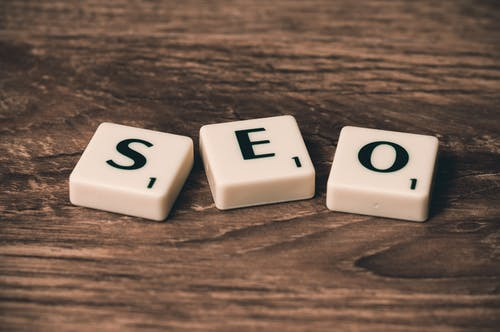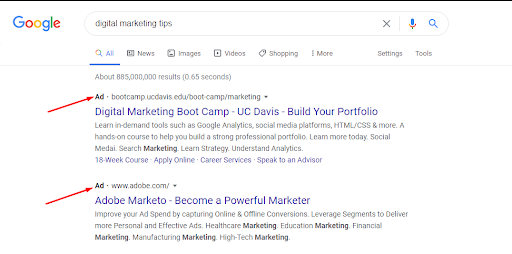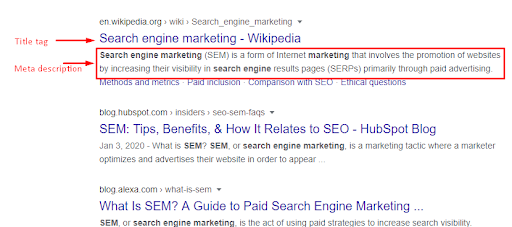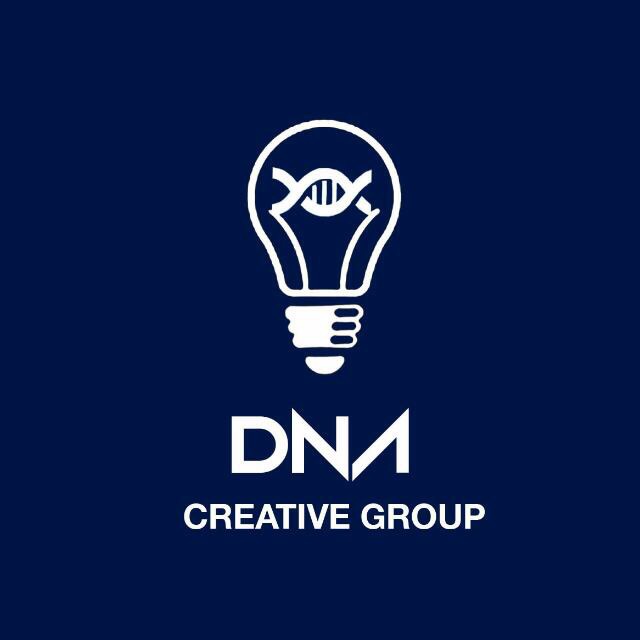KW: SEO, Search Engine Optimization, Search Engine Marketing
Introduction
According to Internet Live Stats, there are over 1.7 billion websites on the internet. Most, if not all, of these websites are created to be seen by other people besides the website creators. It is for this reason websites are built with search engine optimization in mind.
Search engines are those web softwares used to search the internet for content. Examples are Google, Bing, and DuckDuckGo. They have an index of a staggering number of websites and use these to answer your search queries with relevant content.
This is how most websites get seen on the internet. So, building a website in such a way that it is found by a stranger on the internet gave birth to Search Engine Optimization (SEO).
We will go in-depth on what SEO means, how it works, and how to make it work for you.
Skip to:
Search Engine Optimization (SEO)
What is Search Engine Optimization (SEO)?
Why is SEO Important for Online Marketing?
White Hat SEO vs Black Hat SEO
How to Improve Your SEO Results

Search engine optimization is a free way to drive traffic to your website
What is Search Engine Optimization (SEO)?
In simple terms, Search Engine Optimization (SEO) is building your website, from the code up to every bit of content in it, in such a way that it increases the website’s exposure on search engines and attracts organic traffic. Organic traffic is traffic you don’t pay for.
There are two major angles to approach SEO: Building for people and building for web crawlers (we’ll get to this later). Whether one is more important than the other is a debatable topic. But when optimizing for search engines like Google, place greater importance on creating content for people that’s easy to access and understand. Then present it so that search engine crawlers find it and understand it.
Keep in mind what people use search engines for, how they search, what they search for, and how they like to consume content and build around that. We’ll talk about the technical aspects below. But first, let’s learn how it works.
How does SEO Work?
SEO starts with the search engines’ bots sent out to crawl the web. They follow links to websites, and crawl from website to website, picking up information about the website and its pages. They then put this humongous amount of information in an index.
The next step the search engines take is ranking the pages. This is deciding the order in which each page will appear for a particular search query from a user. They do this with their algorithms and hundreds of ranking signals or factors.
Why is SEO Important for Online Marketing?
Marketing is about putting your brand, your product or your service in the face of people interested in doing business with you. In the traditional way, this will mean paying for adverts. But with search engine optimization, you can create content relevant to potential customers and have them come to you. You get this traffic for free.
People use search engines billions of times every day, searching for answers you can provide and in that process, begin a new relationship with a prospect. It is a great way to tap into the commercial intent of these users; they are interested in buying something you offer.
Search engines also make it possible for websites to situate their content at the top of the search engine results pages (SERPs) for a fee. These are paid ads. And this practice of increasing visibility of web pages on search engines by paid advertising is called Search Engine Marketing.

Search engine marketing with paid ads
White Hat SEO vs Black Hat SEO
What is White hat SEO and Black hat SEO? Which one should you want?
Remember, we said there are two major aspects of SEO? Building for people and building for the search engines? We also said it’s a great practice to balance the two and best to put more attention on people.
Black hat SEO seeks to ‘game’ the search engine algorithm and gain cheap ranking. They use several unethical methods to get traffic to their sites such as invisible texts, stuffed keywords, and duplicate content.
White hat SEO, on the other hand, is a sustainable approach to SEO that focuses on providing a great user experience with relevant content, references, well-labeled images, etc. They are user friendly and get favored by search engines. Black hat SEO strategies get banned all the time.
Then there is Gray hat SEO that’s quite in the middle — does some good and does some bad. They are providing relevant content and are generally user friendly, but at the same time working to gain an advantage.
On-Page SEO vs Off-Page SEO
Think of your website as your online business premises. From the aesthetic point of view, the outdoor look of your business is just as important as the indoor. If the indoor is as elegant as a palace but the outdoor looks like a slum, no one will want to come to you. Also, if the exterior is great but the indoor stinks, people will come in and bounce right out.
Go for a balance between outdoor and indoor beauty.
On-Page SEO consists of all the elements of SEO that are directly on your web pages such as headings, content, keyword, and page structure.
Off-Page SEO are those other elements that aren’t on your page but influence your rank such as social media, other websites, and the web history of the user.

Google dominates the search engine market at 86%
On-Page SEO
Content – Content makes (or breaks) your website. No wonder ‘Content is king’ is so popular. Content could be text, video, images, etc. Content performs best on search engines if they:
- answer the user’s questions
- are great quality
- have relevant keywords that are used smartly, and
- keep users engaged.
Keywords – Keywords are words or phrases that encompass the major idea of the content. For example, a blog post titled “How to prepare bean cakes” would have “bean cakes” as its keywords. It is essential to use the correct keywords to rank for and a whole technical skill is built on this called Keyword research.
HTML – Hypertext Markup Language (HTML) is a simple markup language for formatting the content on your website. It is not a programming language and you don’t have to be a programmer to use it. It influences your SEO a great deal because it is one of the most direct ways to speak to the web crawlers. It consists of your title tags, subheads, meta descriptions, etc.
Site Architecture – This is the technical aspect of SEO we spoke of earlier. It controls the user’s experience (UX) when they use your website. Your site should be designed in such a way that it will be easy to navigate, load fast (page speed), safe, and mobile-friendly.
Off-Page SEO
Authority – How widespread and trusted your domain is on the topic being shared. Example: CDC has a higher authority on ‘Covid-19’ than a regular blog article.
Bounce rate – How many people leave your website after visiting one page. Google uses this to measure how much people like your content.
Domain age – Older domain names are more trusted than ones recently created.
Identity – This is how popular a brand name is among the public. Nike, Apple, Bill Gates — they all have identity.
Backlinks – How many high quality websites link back to your web page? This shows how relevant and original your content is.
How to Improve Your SEO Results
Make it easy to navigate
Google Search thrives when people use it. To retain these users, they provide the best experience with the most relevant content to users as much as possible. So Google ranks the site with the better user experience (UX) higher than others.
Making your site easy to navigate is a major contributor to UX. Your nav bar, image labels and alt tags should guide people to where they need to be. So they don’t have to grope in the dark, that is click around till they find what they need.
Get rid of duplicate content
Duplicate content takes you several steps backward in your SEO journey. Google favors sites with unique content. Use Copyscape to find duplicate content and fix it.
Make your site mobile-friendly
More people are surfing the web from smartphones and tablets these days. Google recognizes that as 51% of search traffic comes from mobile devices, it is important for mobile-friendly sites to take the front page. Ask your web developer to build you a responsive website (sites that can adapt to the device on which it is viewed without losing quality). Or use responsive WordPress themes. Check out the performance of your website with this powerful tool by Google.
Optimize your site to run faster
The faster people can get to the solution of their problem, the better the experience is for them. Ideally your site should load within 3 seconds. Anything longer and your SEO rank starts getting affected. You can test your website’s speed on GTmetrix.
Compress and optimize your images, allow browser caching when your site is visited frequently, and work on shrinking (minifying) your JS and CSS scripts. Your web designer should know this.
Improve your content
Consistently delivering great quality content that answers questions users are asking is a great SEO boost. Make it easy to consume, understand, and most importantly, add value to your visitors.
Work on your metadata
Metadata includes your page title displayed on top of your browser, meta description that tells users what your page is about, and alternative text descriptions (alt tags) used to describe the visual media on your page. This helps the search engine better understand the content on your page and serve it to users.

Meta Description
Include relevant inbound and outbound links
Backlinking can be complicated but what you need to know is this: Write relevant content that’s rich and useful enough for other sites to link back to your page. This helps search engines know that you have valuable resources on your page. Also, use your content to link to other relevant content on your website and build a connection of relevant content. It’s great for users navigating your site and excellent for SEO.
Summary
Search Engine Optimization (SEO) is the backbone of your organic traffic generation strategy. After understanding how search engines crawl the web to index its content (which includes your website), they serve these content according to how relevant, trustworthy, and useful it is to users. It is free.
Search engine marketing, on the other hand, mainly uses paid advertisements to position websites on search engine results pages (SERPs) for greater visibility and clickability for select keywords.
We’ve shared simple actions you can start taking right now to improve your visibility on the world’s largest search engine, Google.

